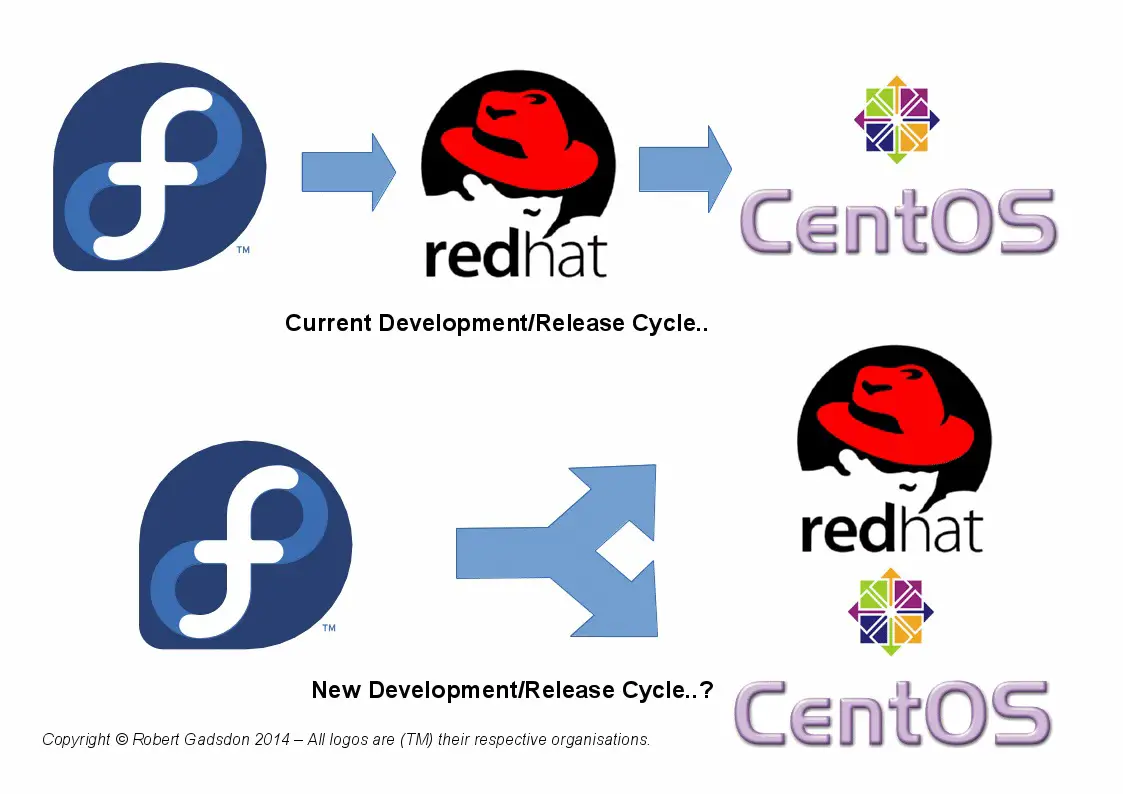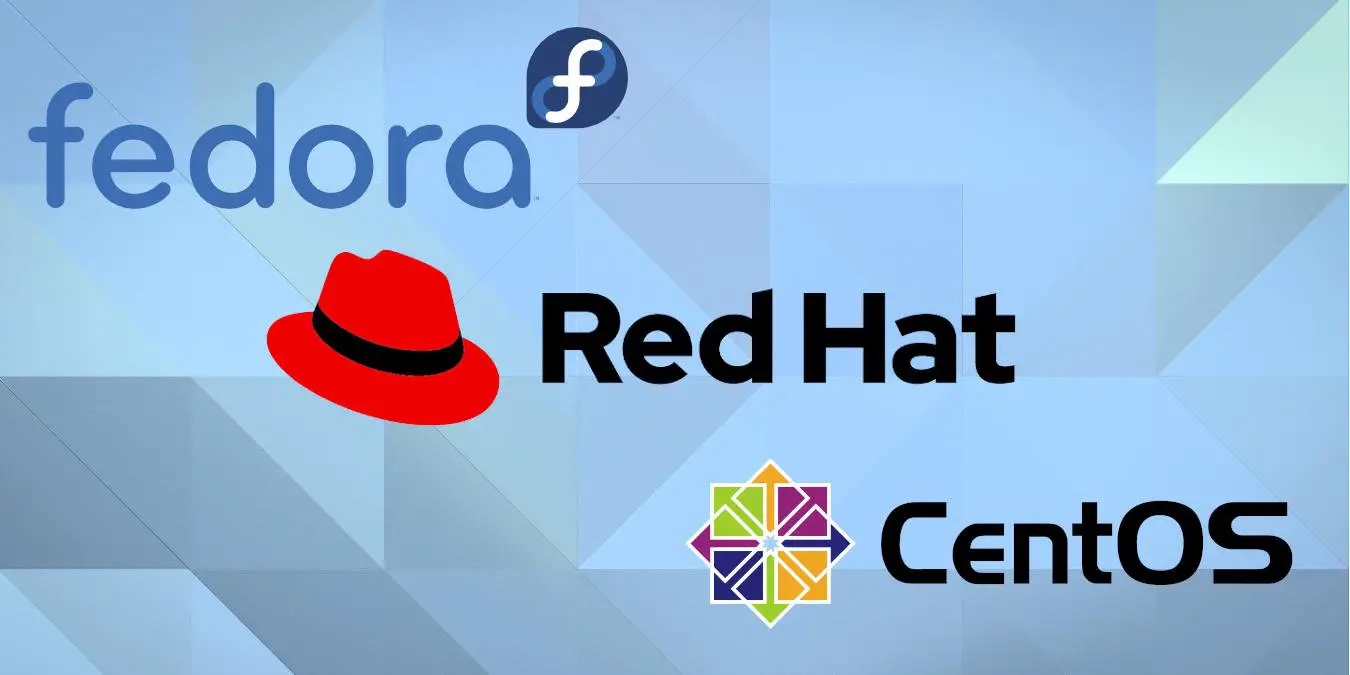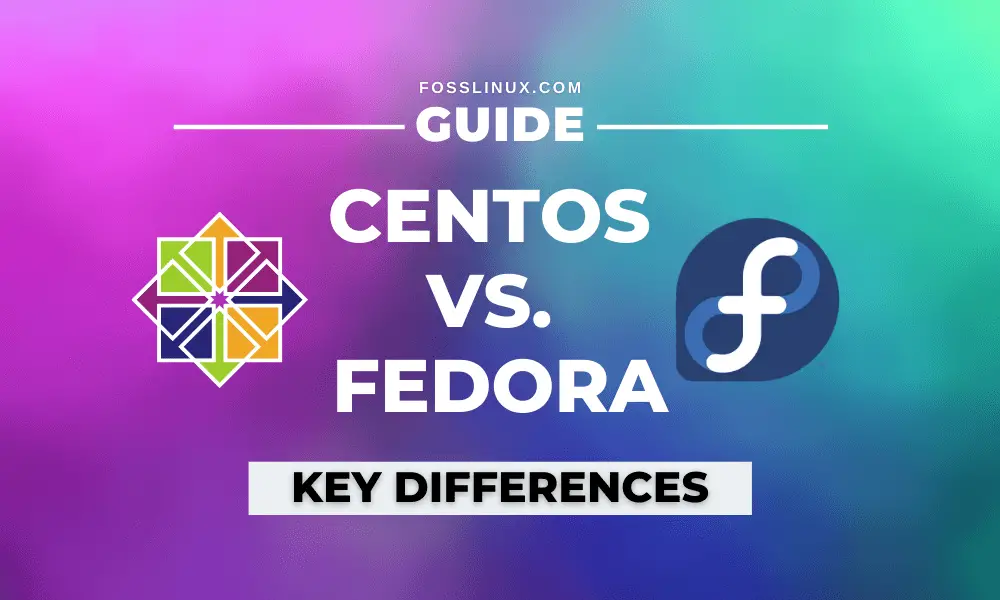Fedora vs. CentOS: Community or Enterprise Stability?

Fedora and CentOS are both popular Linux distributions, but they have different target audiences and goals. Fedora is a community-driven distribution that focuses on bleeding-edge software and features, while CentOS is an enterprise-grade distribution that prioritizes stability and long-term support.

Fedora

- Community-driven: Fedora is developed by a community of volunteers, and its packages are typically updated on a weekly basis. This means that Fedora users have access to the latest software and features, but it also means that the distribution can be less stable than CentOS.
- Bleeding-edge software: Fedora includes the latest versions of software, including the Linux kernel, desktop environments, and applications. This makes Fedora a good choice for users who want to try out the latest and greatest software, but it can also make it more difficult to troubleshoot problems.
- Short release cycle: Fedora has a short release cycle of six months. This means that new versions of Fedora are released every six months, and older versions are no longer supported. This can be a disadvantage for users who want to stick with a particular version of Fedora for a long time.
CentOS
- Enterprise-grade: CentOS is an enterprise-grade distribution that is designed for stability and long-term support. It is based on Red Hat Enterprise Linux (RHEL), which is the leading enterprise Linux distribution.
- Stable software: CentOS packages are typically updated on a quarterly basis, which makes the distribution more stable than Fedora. However, this also means that CentOS users may not have access to the latest software and features.
- Long release cycle: CentOS has a long release cycle of five years. This means that new versions of CentOS are released every five years, and older versions are supported for ten years. This makes CentOS a good choice for users who want to stick with a particular version of the distribution for a long time.
Which distribution is right for you?
The best distribution for you depends on your needs and preferences. If you want a distribution that is stable and long-term supported, then CentOS is a good choice. If you want a distribution that has the latest software and features, then Fedora is a good choice.## Fedora vs. CentOS: Community or Enterprise Stability?
Executive Summary
In the Linux world, choosing the right distribution for your needs can be a daunting task. Two of the most popular choices are Fedora and CentOS. Fedora is a community-based distribution that is known for its cutting-edge features and updates. CentOS is an enterprise-oriented distribution that provides long-term stability and support. In this article, we will compare Fedora and CentOS to help you decide which is the right choice for your needs.
Introduction
Fedora and CentOS are both Linux distributions that are based on the Red Hat Enterprise Linux (RHEL) operating system. However, there are some important differences between the two distributions. Fedora is a community-based distribution that is developed by a global community of volunteers. CentOS is an enterprise-oriented distribution that is supported by Red Hat.
Key Differences
1. Release Cycle
- Fedora has a short release cycle of 6 months. This means that new versions of Fedora are released twice a year.
- CentOS has a long release cycle of 10 years. This means that new versions of CentOS are released every 10 years.
2. Package Management
- Fedora uses the DNF package manager. DNF is a modern package manager that is designed to be fast and efficient.
- CentOS uses the YUM package manager. YUM is an older package manager that is still used by many enterprise distributions.
3. Support
- Fedora is a community-supported distribution. This means that there is no official support from Red Hat. However, there is a large community of volunteers who are willing to help users with technical issues.
- CentOS is an enterprise-supported distribution. This means that Red Hat provides official support for CentOS. Red Hat also provides paid support options for CentOS.
4. Features
- Fedora is known for its cutting-edge features. Fedora is often the first distribution to adopt new features and updates.
- CentOS is known for its stability and reliability. CentOS is designed to be a stable and reliable platform for enterprise applications.
5. Security
- Fedora has a good security track record. Fedora is regularly updated with the latest security patches.
- CentOS has a very good security track record. CentOS is used by many large enterprises and government agencies because of its strong security.
Conclusion
Fedora and CentOS are both excellent Linux distributions with their own unique strengths and weaknesses. Fedora is a good choice for users who want a cutting-edge distribution with the latest features and updates. CentOS is a good choice for users who want a stable and reliable distribution with long-term support.
Keyword Phrase Tags
- fedora vs centos
- community distro
- enterprise distro
- linux distribution
- server operating system

If you want my humble opinion, centos is more easy to use than Fedora that’s beacause it’s more friendly and simple. I have use both in my 15 years as a software enginner and i think centos take the price.
Lol, you say this only because you are used to it. I have been use Fedora for many years and never had any problem. In fact, I think is more stable than centos.
Mmmh, I think you are both wrong. Manjaro is the best distro. It’s a rolling release that means you always have the latest software. It’s also very stable and easy to use.
I think is a matter of prefference. I have use both Fedora and Centos and I don’t see a big difference. They are both good distros.
You forgot to mention that Centos is a Red Hat Enterprise Linux clone. This means that is more stable and secure than Fedora.
I agree with you. Centos is more stable and secure. It’s the best choice for servers.
I don’t know, I think Fedora is more flexible and customizable. It’s the best choice for developers.
I think you are both wrong. Gentoo is the best distro. It’s the most customizable and flexible distro. It’s also very stable and secure.
I agree with you. Gentoo is the best distro. It’s the most customizable and flexible distro. It’s also very stable and secure.
I think you are all wrong. Void Linux is the best distro. It’s a rolling release that means you always have the latest software. It’s also very stable and easy to use.
I agree with you. Void Linux is the best distro. It’s the most customizable and flexible distro. It’s also very stable and secure.
I think you are all wrong. Puppy Linux is the best distro. It’s the most lightweight and portable distro. It’s also very stable and easy to use.
I agree with you. Puppy Linux is the best distro. It’s the most customizable and flexible distro. It’s also very stable and secure.
I think you are all wrong. Slackware is the best distro. It’s the oldest and most stable distro. It’s also very customizable and flexible.
I agree with you. Slackware is the best distro. It’s the most customizable and flexible distro. It’s also very stable and secure.